How do you actually go about performing a root cause analysis? In the following case, I’m going to follow a speech given by the U.S. Chemical Safety Board Investigations Manager Stephen Selk, P.E. and do a root cause analysis based on it. This speech is for the purpose of updating the public on the investigation of the Imperial Sugar Company explosion and fire in Savannah, Georgia on February 17, 2008 at 1 p.m. Excerpts of his words are in bold and my root cause analysis follows. (To facilitate understanding, the boxes I add at each step are colored.)
A primer on dust explosions:
It is necessary for five elements to be in place for a dust explosion to occur.
First is the presence of a combustible dust itself. That can be almost any organic material – grain flour, plastic, corn starch, pharmaceuticals, and even powdered metals such as aluminum. And as was the case here in Savannah sugar particles are a combustible dust.

An important parameter is the particle size. Finer particles are more likely to be both ignitable and dispersible. Additional parameters are particle shape and the molecular composition of the substance itself.
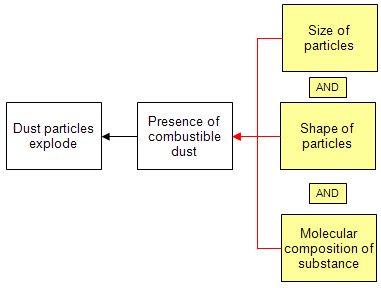
A second needed element is a source of oxygen. Because air contains appreciable amounts of oxygen, air is all that is necessary to support an explosion.
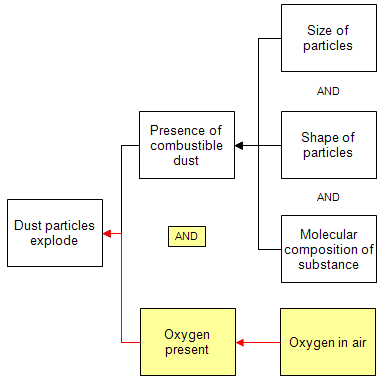
Thirdly, the dust needs to be dispersed into the air. (It isn’t specified how this happens, so we’ll add a question mark.)
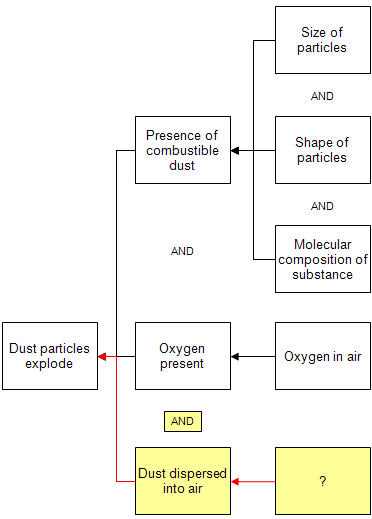
Finally, some energy source is required to ignite the mixture. That may be something with as little energy as static electricity or a stronger energy source such as an open flame or an electrical fault. (It could be any or all of these things, so instead of using “AND”, we’ll use “AND/OR”.)
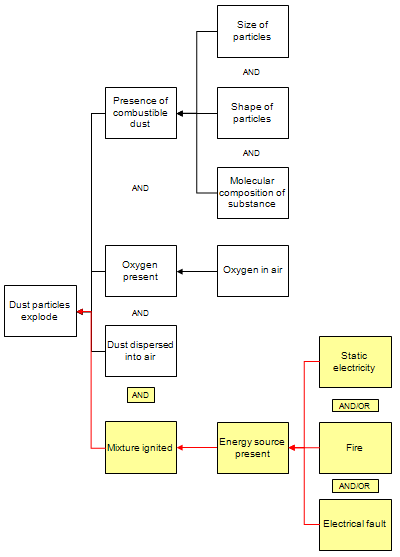
A final element is confinement. And because buildings have walls, ceilings, floors and roofs, they create confinement. However, another form of confinement may be process equipment and even ducting. It can be ironic that ducting used for dust extraction and other equipment such as dust collectors can themselves be conducive for the initiation of dust explosions. (As opposed to the ignition source, the source of the confinement of the particles will be only one thing, so we’ll use “OR”.)
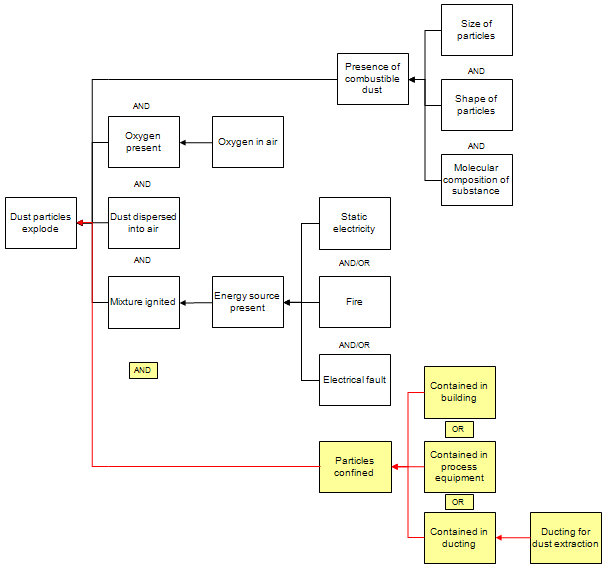
An important attribute of dust explosions is that they may propagate. In such instances some primary event occurs that kicks up larger amounts of dust that may have accumulated and disperses the dust into the air. When this happens the stage can be set for catastrophe. A very large flammable dust cloud ignites with devastating consequences. In other instances an initial explosion may simply propagate as the blast wave ahead of a rapidly advancing flame front – the fireball – which disperses more dust and ignites as the fireball expands. (Here’s where things get complicated. The initial explosion causes dust to be kicked up and a fireball. The flames ignite the “new” dust. However, in order for an explosion to occur, we still have to have the 5 things we had before: 1) the presence of the dust – that’s what got kicked up by the initial explosion. 2) oxygen – it’s the same oxygen from the air, so we’ll draw an arrow over. 3) the dust needs to be dispersed in the air – this is what happened when the explosion kicked up the dust. 4) the mixture is ignited – this occurs thanks to the flames from the initial explosion. 5) the particles are confined. The potential confinement sources are still the same, so we’ll draw an arrow from there, too. After some rearranging, we have the map below.)
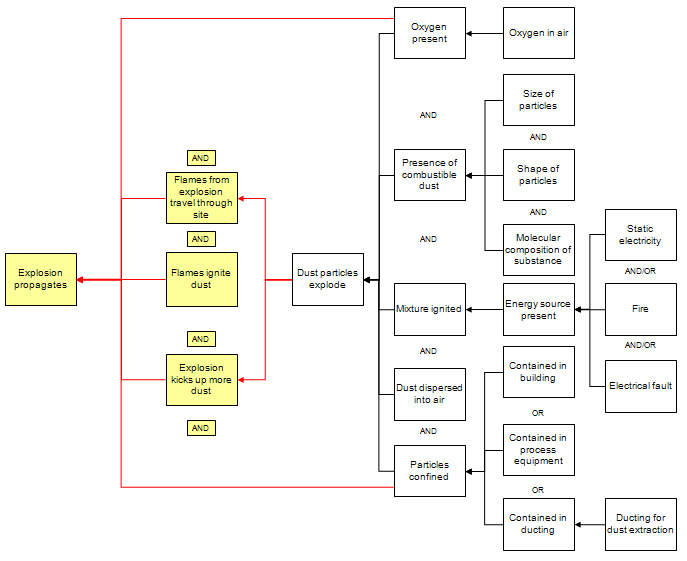
When a dust explosion occurs in a building, walls may blow out, floors may heave, and ceilings may collapse. This can all occur in a few seconds. It is therefore not unusual for local fire protection and electrical systems to be almost instantly crippled. Occupants may at first find themselves burned, or blown about, or struck, or among rubble. At worst they may experience all of that. At first they may find themselves in darkness or the obscurity of smoke. But fires initiated by the thermal energy of the explosion may follow and grow.
The scene is set for tragedy.
(Here’s where we get into the goals. A deviation from our safety goal is the deaths and injuries that may occur. A deviation from our material goal is the destruction of buildings and equipment. Below is the completed cause map. As you can see, it’s easy to do a root cause analysis with this method.)
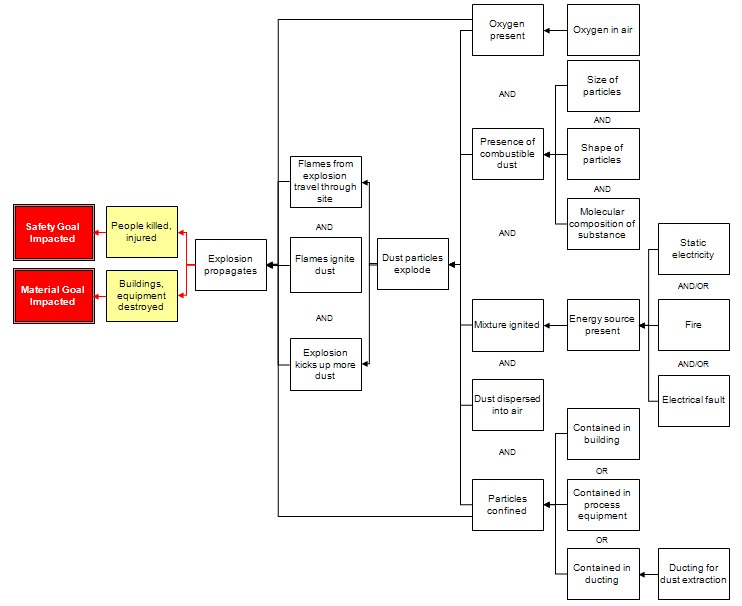
Bring Cause Mapping® Root Cause Analysis training to your site
Schedule a workshop at your location to train your team on how to lead, facilitate, and participate in a root cause analysis investigation.
